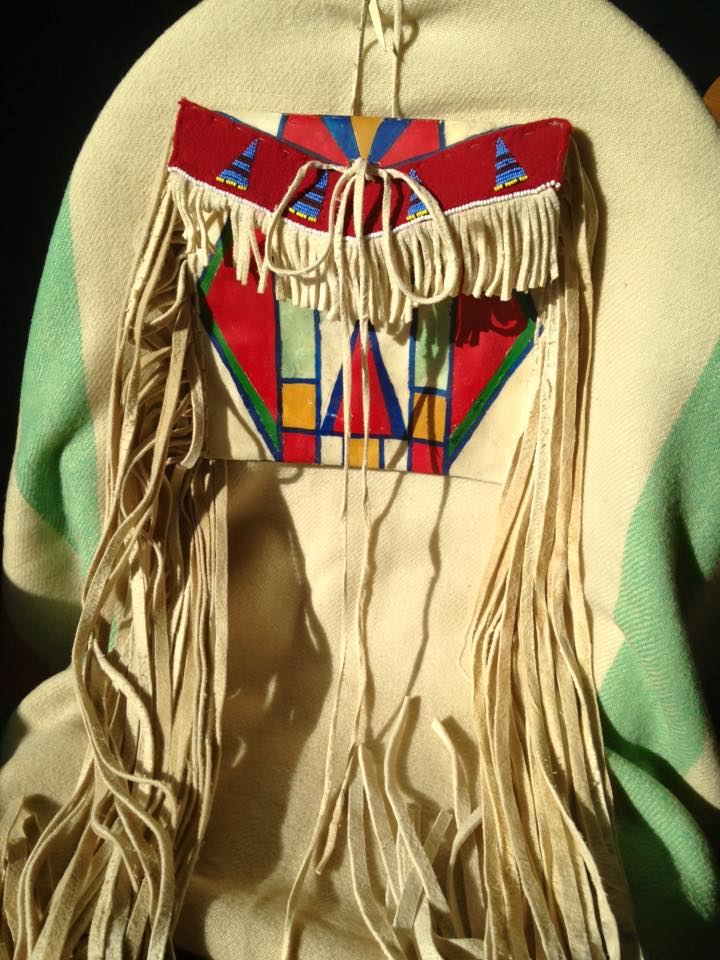- 406.390.4568
- Email Bruce
- Whitewater, Montana

Many useful and beautiful items were made by Native Americans from animal hides, from the moccasins on their feet, to Buffalo robes, to the covers on their lodges and just about everything in between. These items fall into two categories: Rawhide and Buckskin.
Basically Rawhide is simply a hide which. has been fleshed, de-haired, stretched tight and allowed to dry. Once dry and kept dry, it is almost impervious to rot and insects.
Rawhide is commonly referred to as “Parfleche” derived from two French words which mean “to deflect an arrow” because rawhide, when dried became stiff and hard and was used to make shields.
The word Parfleche also often referred to a large rawhide envelope used for storing food or clothing. They were generally made in matching pairs and painted in colorful geometric designs which added much to the decor of the lodge.
But Parfleche was used for many other articles as well including material for constructing weapons, tools, and making repairs. When it is wet, it is pliable and can be cut, stretched, and molded into many useful items. Once it dries, rawhide shrinks tight and retains it’s shape.
The other category of prepared hides is Buckskin. Like making Parfleche, a green hide is first fleshed and de-haired taking care to remove all connective tissue of the flesh side and the epidermis on the hair side.
At this point the hide when stretched and dried would be rawhide. To make it into useful items such as clothing or even lodge covers, it must be softened. This is done by breaking down the natural glue in the hide by saturating the hide with a paste or slurry made from the brain of the animal and water. The hide is then wrung dry as possible.
The next step is labor intensive as every inch of the hide must be manipulated by rubbing and stretching until it is dry. This is usually an all day process but the end result is a beautiful white hide soft as velvet. The final step is to smoke the hide on both sides. This does several important things. It gives the Buckskin a beautiful brown color, a pleasant smokey smell which repels insects, and helps the skin to retain its softness after getting wet.
Brain tanned Buckskin. has no equal for making clothing and other articles requiring a soft, durable leather and for applying beadwork or quillwork.